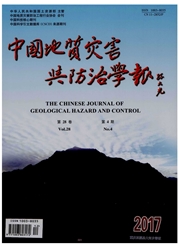

 中文摘要:
中文摘要:
己内酰胺(CPL)是重要的有机化工原料,对CPL脱水是除杂工艺中最后一步。然而,CPL是热敏性物质,为防止CPL高温分解,重点研究了渗透汽化膜分离技术对CPL脱水。以棉短绒为制膜原料,采用碱溶解方法,通过相转变制备了再生纤维素(RC)膜。研究了铸膜液浓度对膜结构的影响。铸膜液的最佳浓度为4 wt %,RC膜表面平滑、无孔,可作为渗透汽化膜,但纯RC膜的通量较小。因此,选取了聚乙烯醇(PVA)、聚乙烯吡咯烷酮(PVP)和β-环糊精(β-CD)分别对RC膜共混改性,考察了改性膜的溶胀度、接触角和渗透汽化膜分离性能。RC-PVA膜的机械强度、通量和分离因子均优于纯RC膜。β-CD提高了膜的分离因子,对通量影响较小。
 英文摘要:
英文摘要:
Caprolactam(C6H11NO)is one of the most important material in the polymer industry, dehydration is the most important edulcoration technology in the final caprolactam purification. However,caprolactam is heat-sensitive substance, for prevention of degradation under high temperature, the dehydration of caprolactam with pervaporation (PVP) is studied. Cotton as membrane material and is firstly dessloved in the alkaline solution, then the regenerated cellulose(RC)is prepared by phase inversion method. The influence of concentration of casting solution on the membrane structure is investigated. The results show that the 4 wt % cellulose concentration is suitable to prepare the PV membrane. But the flux and separation factor of pure RC membrane are not ideal. Therefore, polyvinyl alcohol(PVA),Polyvinyl-Py-rrolidone(PVP)and β-cyclodextrin(β-CD)are selected to modify the RC membrane. The degree of swelling,contact angle and PV performance of the modified membranes are tested. RC-PVA has better properties and the strength,the flux and the separation factor are improved. With the addition ofβ-CD,the separation factor of membrane is enhanced, and it has a little influence on flux.
 同期刊论文项目
同期刊论文项目
 同项目期刊论文
同项目期刊论文
 期刊信息
期刊信息
